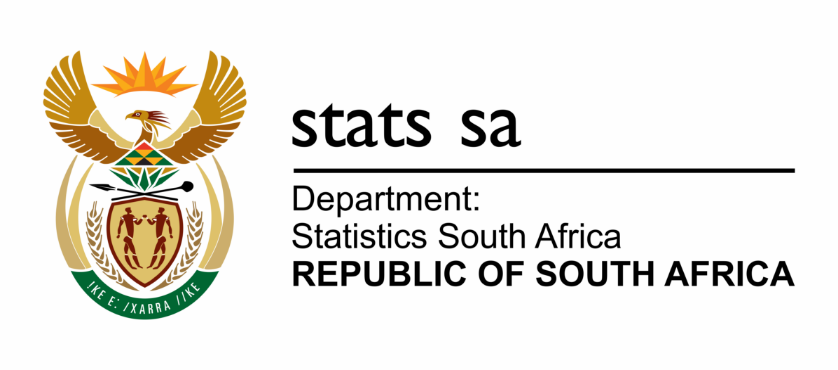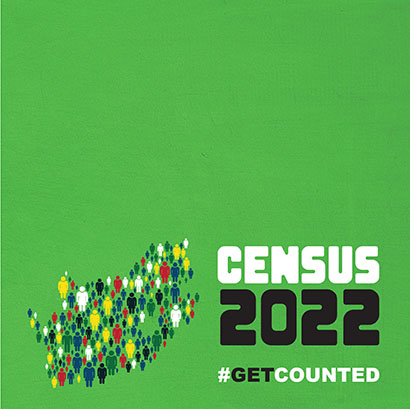
The South Africa I know,
The Home I Understand
Results for: tabletten xanax ��������������������� www.7rx.biz/xanax ��������������������� K������������������pa xanax ups leverans, xanax Online Safe Order xanax online recension. billig xanax Tillg������������������nglig online K������������������pa xanax online billig.
No publication results found.
Perhaps you should try again with a different search term.Sundays River Valley
The Sunday River Valley Local Municipality is one the developing local municipalities within the Cacadu District Municipality (western region). It is located in the Eastern Cape, approximately 80km north� east of the Nelson Mandela Bay Municipality.read more »
Mbhashe
The Mbhashe municipality is situated in the south eastern part of the Eastern Cape Province, and is bound by the Qhora River in the south to Mncwasa River in the north along the Indian Ocean. Mbhashe has earned the name from the fast-flowing river called Mbhashe which flows from the banks of eNgcobo. Mbhashe municipality comprises the three towns of Idutywa, Gatyana, Xhora and numerous rural settlements. Source: �(www.mbhashemun.gov.za).
read more »Great Kei
The Great Kei Local Municipality is located within the Eastern Cape province and covers an area of 1�421 km�. The municipality is bounded in the east by the Great Kei River and MnqumaLocal Municipality, in the south-east by the coastline between Kwelera and Kei Mouth, in the west by the Buffalo City Metropolitan, and by the AmahlathiLocal Municipality, which is situated to the north.
Source: (www.greatkeilm.gov.za)read more »
Amahlathi
Amahlathi Local Municipality is an administrative area in the Amatole District of the Eastern Cape in South Africa. Amahlati is an isiXhosa name that means �a place where many trees are grouped together, a forest�. �Forests are a key feature of the area. Source: (www.amahlathi.gov.za).
read more »Ngqushwa
Ngqushwa Local Municipality, located in the Eastern Cape, is bounded on the east by the Great Fish River and on the south by the Indian Ocean. The municipality is an amalgamation of two towns namely, Hamburg and Peddie. It is one of the eight municipalities that fall under the Amathole District Municipality.
Source: Ngqushwa municipality website.read more »
Transport
Travel survey � Online Updates
The National Household Travel survey (NHTS) provides insight into the travel patterns of South African households, providing information on modes of transport used, such as land, air and water transport, as well as cycling, walking, public and private transport. Also included are statistics on travel times, transport challenges experienced by households, and travel patterns related to work, education and leisure. NHTS surveys were conducted in 2003, 2013 and 2020.
Transport and the need for transport has become an important part of daily life in South Africa. Not only does the movement of goods and services play an important part in the South African economy, but the types of transport available to individuals affects spatial decisions in terms of work, entertainment, education and place of residence.
Stats SA publishes a range of transport-related information in various reports and publications.
Travel survey
The National Household Travel survey (NHTS) provides insight into the travel patterns of South African households, providing information on modes of transport used, such as land, air and water transport, as well as cycling, walking, public and private transport. Also included are statistics on travel times, transport challenges experienced by households, and travel patterns related to work, education and leisure. NHTS surveys were conducted in 2003 and 2013.
Transport and the economy
Stats SA�s quarterly Gross domestic product (GDP) release provides information on the size and growth of various industries in the South African economy, including the transport industry.
The same publication also includes figures on overall household expenditure on transport. The monthly Motor trade sales release provides the time series data of trade in motor vehicles and motor accessories.
The Land transport survey, published on a monthly basis, provides data on passenger and freight transportation by land.
The Producer Price Index (PPI) release provides information on the prices of transport equipment leaving the factory gate.
The extent to which prices of fuel, public transport and private transport are changing is covered in the monthly Consumer Price Index (CPI) release.
Employment
Stats SA�s Quarterly Labour Force Survey (QLFS) and Quarterly Employment Survey (QES) provide information on the number of individuals employed in various industries, including the transport industry.
Financial indicators
The Quarterly Financial Statistics (QFS) and Annual Financial Statistics (AFS) reports provide a financial overview of various industries, including transport, storage and communication. Data on turnover, income and expenditure, profit or loss and various balance sheet items are also included in the reports.
The transport and storage industry report for 2013 provides more in-depth information on the size, nature and structure of the transport and storage industry. This periodic survey provides details on employment within the industry, trading income, expenditure, profit or loss, inventories, sales and services, and purchases.read more »
Crime statistics
Crime prevention and ultimate elimination is one of the priority goals of the National Development Plan (NDP). Crime affects all people irrespective of their background, and it is a topic that attracts a lot of media attention. Analysis will show that some groupings are affected by certain types of crime more than others. Crime statistics are essential in order to understand the temporal and spatial dynamics of crime. Such understanding is vital for planning targeted interventions and assessing progress made towards achieving a crime free nation where
"people living in South Africa feel safe at home, at school and at work, and they enjoy a community life free of fear. Women walk freely in the streets and children play safely outside".
There are two major sources of crime statistics in South Africa, namely the South African Police Service (SAPS) and Statistics South Africa (Stats SA). The other smaller sources such as the Institute for Security Studies (ISS) and the Medical Research Council (MRC) are by no means insignificant, as they provide statistics for types of crime not adequately covered by the major players, such as domestic violence. While the methodologies used by the SAPS and Stats SA are very different, the two institutions produce crime statistics that complement each other. The SAPS produces administrative data of crime reported to police stations by victims, the public and crime reported as a result of police activity. Stats SA produces crime statistics estimated from household surveys. Crimes reported to the SAPS do not always have the same definitions as crime statistics produced from VOCS. In addition, not all crimes reported by the SAPS are reported by VOCS and vice versa. Working in close collaboration with Stats SA, the South African Police Service has undertaken to align its Classification of Crime for Statistical Purposes (CCSP) to the International Classification of Crime for Statistical Purposes (ICCS).
Highlights of the 2017/18 Victims of Crime report
Aggregate crime levels increased in 2017/18 compared to 2016/17. It is estimated that over 1,5 million incidences of household crime occurred in South Africa in 2017/18, which constitutes an increase of 5% compared to the previous year. Incidences of crime on individuals are estimated to be over 1,6 million, which is an increase of 5% from the previous year. Aggregate household crime levels increased in Free State, KwaZulu-Natal, North West, Gauteng and Mpumalanga. Individual crime levels increased in Free State, North West and Gauteng. North West experienced a drastic increase of 80% in the individual crime level.
Perceptions of South Africans on crime in 2017/18 were more skeptical compared to the previous year. About 42% thought property crime increased during the past three years. This is an increase of 6,9% from the previous year. 46% thought violent crime increased during the past three years, an increase of 4,5% over the previous year. Western Cape was the most skeptical about crime trends, as 84% of Western Cape residents thought that crime in South African increased or stayed the same. Mpumalanga was the least skeptical among the nine provinces, where 65% thought that crime increased or stayed the same during the past three years. Crimes that are feared most are those that are most common.
An estimated 79% of South Africans felt safe walking alone in their neighbourhoods during the day, which is a decrease of 6,7% from last year. About 32% of South Africans felt safe walking alone in their neighbourhoods at night, constituting an increase of 8% from last year. The highlights for household and individual experiences of crime from the 2016/17 VOCS report are as follows:
read more »
Household Service Delivery Statistics
The dawn of democracy in 1994 created a new dispensation in which access to basic services such as housing, water and sanitation was recognized as a fundamental human right. South Africa inherited high levels of poverty and it continues to be confronted with unequal and often inadequate access to resources, infrastructure and social services. The Bill of Rights enshrined the right to basic services and commanded that the state must take reasonable measures to achieve the progressive realisation of these rights.
Faced by inadequate information about the state of development in South Africa, Statistics South Africa (then called the Central Statistical Service) launched the October Household Survey (OHS) programme in 1993. The survey was discontinued in 1999 and subsequently replaced by the General Household Survey (GHS) which was instituted in 2002 in order to determine the level of development in the country and the performance of programs and projects on a regular basis. The GHS continues to evolve and key questions are continuously added and/or modified in consultation with key stakeholders to maintain the relevance and quality of data. In addition to measuring access to key services, the level of satisfaction with, as well as perceived quality of selected services provided by Government are also measured.read more »
sustainable development goals
The global agenda on sustainable development is best expressed through the SDGs, what one can best describe as the ultimate measure of progress which is about prosperity for people and planet. The SDGs, a set of 17 �Global Goals�, 169 targets, and 230 indicators, are a standard for evaluating if progress is being made across the world to reduce poverty, improve quality of life, and realise aspirations of the masses of people towards development.
Sustainable Development Goals (SDGs): Indicator Baseline Report 2017
This report sheds light on what has been done and on what more needs to be accomplished in order to rid South Africa of extreme poverty.
Structure of the report
The report covers all 17 goals stated in the SDG documents. Each goal will be treated as a separate chapter in the report. Each chapter will be structured as follows:
1)�������� An introduction linking the sustainable development goal to the country�s National Development Plan (NDP), related policies, programmes and projects initiated by departments and institutions.
2)�������� Statement of the individual targets relating to the goal together with all indicators pertaining to specific targets.
3)�������� The definition of the indicator as well as the method of computing the indicator values.
4)�������� A baseline indicator value and where applicable, a chart/table indicating changes over time for the selected indicators are given. Baseline indicator values are based on data obtained during the base year (2016) or the year closest to 2016 for which data was available. In instances where the base year/period is not referenced on the charts/tables, the base year is 2016.
5)�������� Indication of the data source(s).
6)�������� Where possible, a comment section relating to the indicator is included.
Click here for�GoalTracker Portalread more »
- 1


